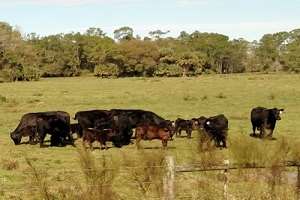By Julie Thelen
As the fall weather approaches, many youth across Michigan begin looking for their 4-H beef project animal. Caring for a beef animal requires forward thinking and creating a plan of how to see your project through to the end. In addition to the requirement of selecting the animal, there is also a financial burden of caring for an animal through the duration of your project. This three-part series will review important beef project content and address three main topics: preparations for the beef animal, estimating costs of care and calf selection. These tips and tricks will help you be more prepared for your 4-H beef project experience.

The first article starts at the beginning: preparations. As you make plans to raise and care for a beef project, think through all of the needs of your project. These details will help make the process of caring for a beef animal easier. Here are a few examples of needs for your project.
- Financial burden: Raising and caring for cattle require a large input of funds to purchase and provide feed for the animal. Learn how to be better prepared for the costs through the “Estimating Costs” article.
- Fences: Cattle are curious and will tend to notice weak areas of fencing. Fences should be secure and well laid out to allow for human access to the pen, as well as quick exit of the pen if needed. The fence should be tall enough to discourage a calf from jumping if spooked, as well as keep a grown project animal in the pen.
- Feed storage: Quality roughage is a necessity of raising beef cattle since they are ruminant animals, meaning they have four compartments to their stomach. Roughages, such as hay, should be stored under cover to help maintain the quality and increase palatability for the animal. In addition to roughages, cattle being fed to exhibit at a fair will require some sort of feedstuff. The feed should be stored indoors where it is dry and not impacted by rodent issues.
- Bedding: Keeping your project well bedded will make their hair coat cleaner and make preparing them to show easier down the road. Additionally, bedding provides cattle a dry location for laying down and can help keep animals healthy. Make sure to secure bedding before your animal arrives and have a plan to maintain a clean area for the animal.
- Water supply: Water is the single most important nutrient for animals. Clean, fresh water is needed on a daily basis for a successful beef project. Have a plan going into the winter months of how to provide water when temperatures are below freezing.
- Herding animal concerns: Many beef animals do not like to be alone. Finding an animal companion, whether a beef animal or another species, is important for keeping animals calm. If at all possible, try to have a plan to raise your animal in a small group, having at least one animal a visible distance away from your project animal.
- Animal selection: Finding the right beef animal for your fair or exhibition can sometimes be a difficult. Cattle need to weigh within certain weight requirements to be exhibited at some events, which adds an additional obstacle when planning for the future. Review some tips in the “Calf Selection” article.
Although there are many challenges to raising and caring for beef cattle, it is also very rewarding. Resources like the 4-H Beef Project Snapshot can help provide recommendations for content learning and discovering new opportunities.
Michigan State University Extension and the Michigan 4-H Youth Development program helps to create a community excited about STEM (Science, Technology, Engineering, and Mathematics). 4-H STEM programming seeks to increase science literacy, introducing youth to the experiential learning process that helps them to build problem-solving, critical-thinking and decision-making skills. Youth who participate in 4-H STEM content are better equipped with critical life skills necessary for future success. To learn more about the positive impact of Michigan 4-H youth in STEM literacy programs, read our 2015 Impact Report: “Building Science Literacy and Future STEM Professionals.”
Source: msu.edu